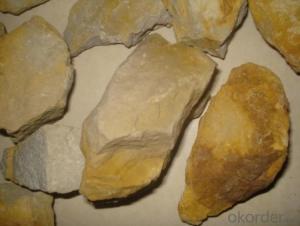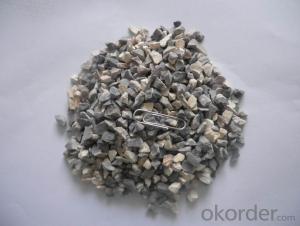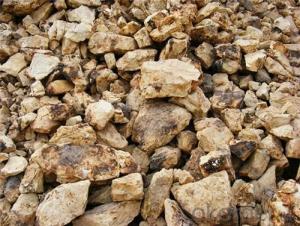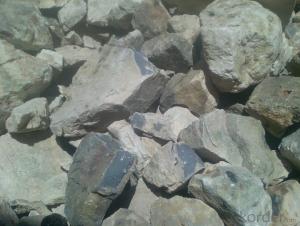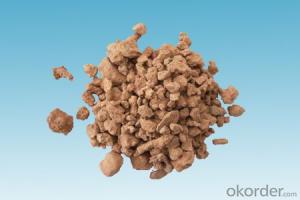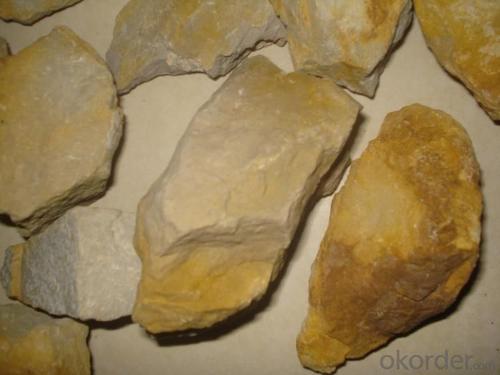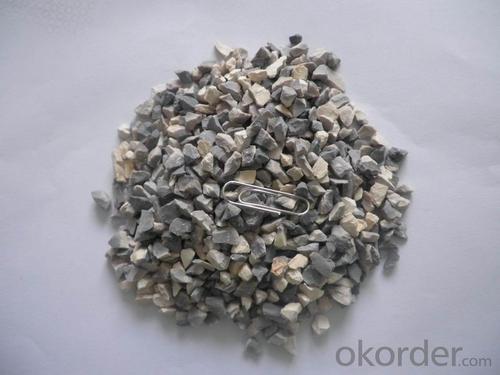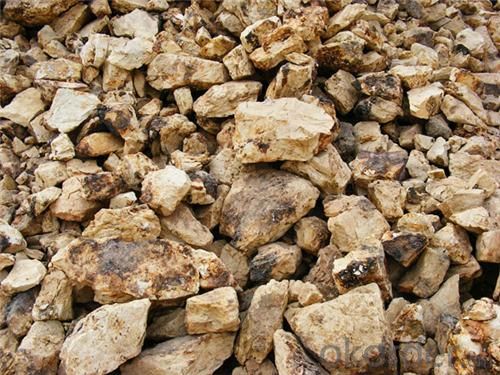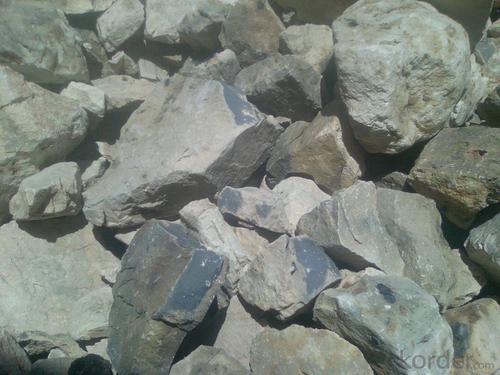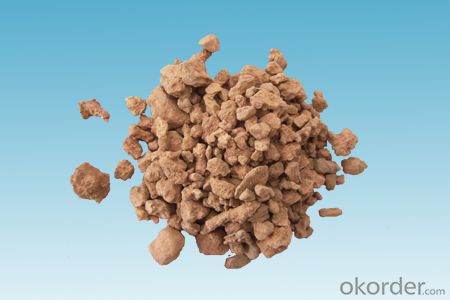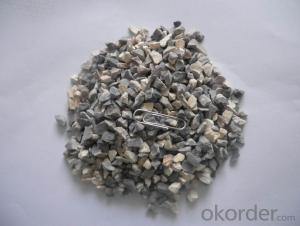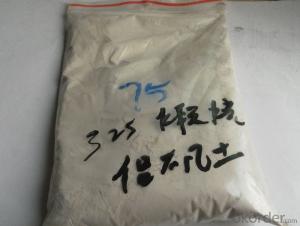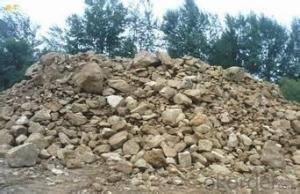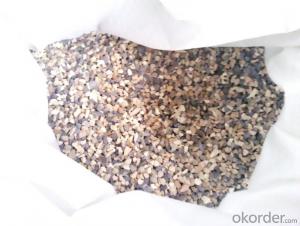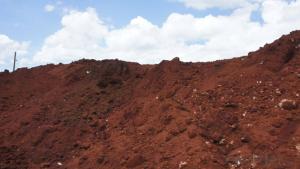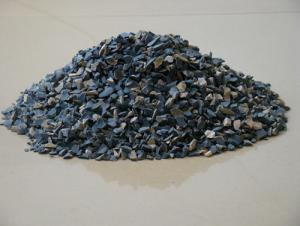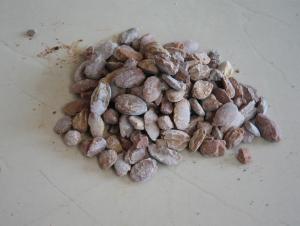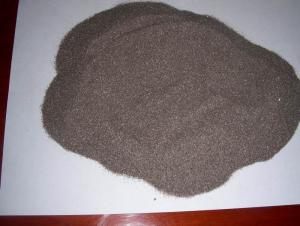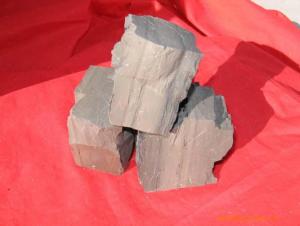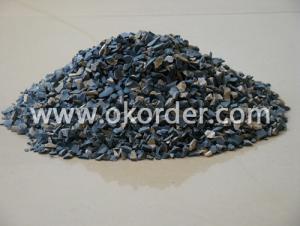Raw Materials for Refractory:High Alumina Oxide (Bauxite Chamotte) from CNBM China
- Loading Port:
- Tianjin
- Payment Terms:
- TT OR LC
- Min Order Qty:
- 11 m.t.
- Supply Capability:
- 10000000 m.t./month
OKorder Service Pledge
OKorder Financial Service
You Might Also Like
1.Structure of Calcined Bauxite (High Alumina Oxide) Description
Bauxite (aluminous soil; Bauxite) is also called the alumina or bauxite, main ingredients are alumina, hydrated alumina containing impurities, is an earthy mineral. White or gray, brown and yellow or light red by iron. From 4 to 3.9 g/cm3 density, hardness, 1 ~ 3 is not transparent, very brittle. Very difficult to melt. Insoluble in water, soluble in sulfuric acid, sodium hydroxide solution. Mainly used for aluminium, refractory material.
Size 0-1mm,1-3mm,3-5mm,5-8mm,8-15mm,0-5mm,0-50mm, 100mesh,180mesh,200mesh,220mesh,250mesh,270mesh,325mesh; also we can process different specifications according to special requirement of customers.
2.Main Features of the Calcined Bauxite
Calcined bauxite is one of the principal ore of aluminum. Calcined bauxite contains hydrous aluminum oxides and aluminum
hydroxides, formed through the laterization of aluminous rocks in tropical and subtropical areas .Calcined bauxite is obtained by calcining (heating)superior grade bauxite at high temperature (from 85OC to 1600C) .This removes moisture there. By increasing the alumina content,compared to an alumina content of about 57%to 58% in raw bauxite, calcined bauxite has an alumina content of 84%to88%.The heating is carried out in rotary kilns.
3.Main usage of the Calcined Bauxite
(1) aluminium industry. Used in national defense, aerospace, automotive, electronics, chemical industry, daily necessities, etc.
(2) precision casting. Alumina clinker made after the mould precision casting processed into fine powder. Used in military industry, aerospace, communications, instrumentation, machinery and medical equipment department.
(3) is used for refractory products. High bauxite clinker refractoriness is as high as 1780, chemical stability strong, and good physical properties.
(4) aluminum silicate refractory fiber. With light weight, high temperature resistance, good thermal stability, low thermal conductivity, heat capacity is small and the advantages of resistance to mechanical shock. Used in iron and steel, nonferrous metallurgy, electronics, petroleum, chemical, aerospace, atomic energy, defense and other industries.
(5) in magnesia and bauxite clinker as raw materials, add the appropriate binder, used for pouring ladle whole ladle lining has particularly good effects.
(6) manufacture alumina cement, abrasive materials, ceramic industry and chemical industry can be aluminum of various compound.
4. Calcined Bauxite Images
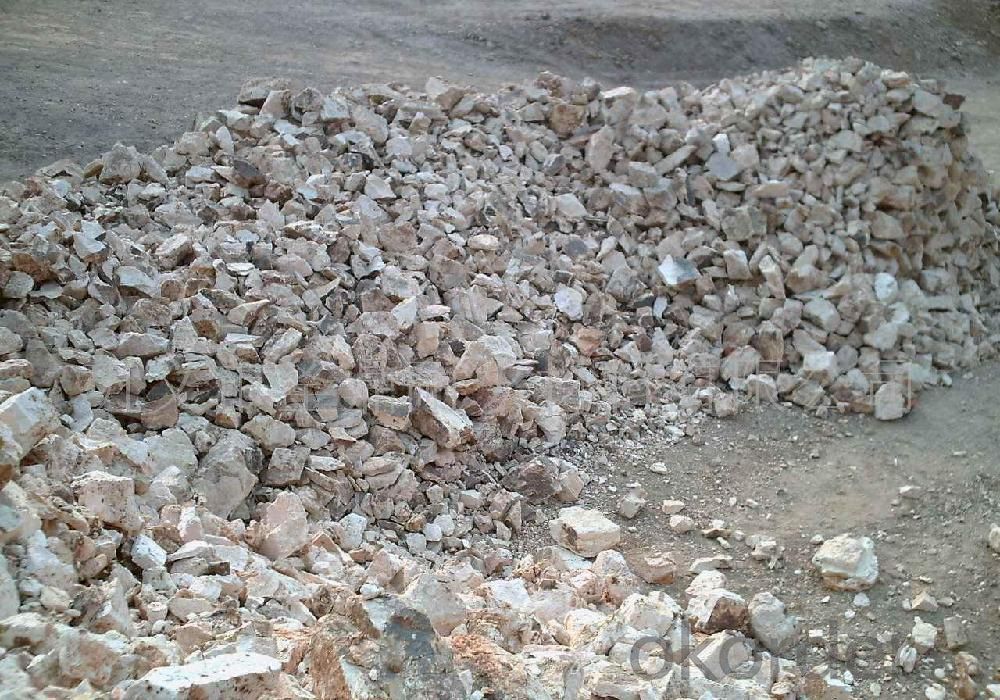
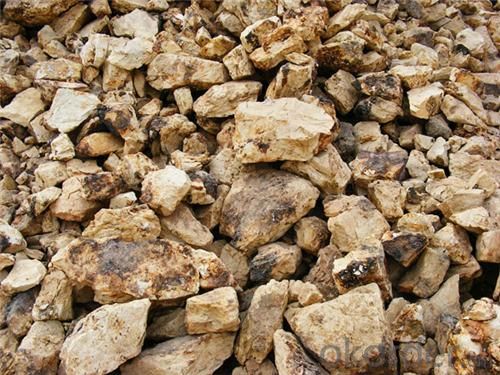
5. Calcined Bauxite Specification
Item | RL-65 | RL-55 | RL-48 | ||||
Al203, % min | 65 | 55 | 48 | ||||
Fe2O3, % max | --- | ---- | --- | ||||
Refractoriness min | 1780 | 1760 | 1740 | ||||
RUL min | 1500 | 1470 | 1420 | ||||
P.L.C. % 1400 X 4h | 0-0.4 | 0-0.4 | 0-0.4 | ||||
A.P. % max | 22(24) | ||||||
CCS MPa min | 50 | 45 | 40 | ||||
Thermal Shock Resistance (water cooling) | 6 | ||||||
Item | LKBL-70 | Si-Mullite Bricks | Anti-Alkaline Bricks | ||||
Al203, % | 70 | 60 | 25-35 | ||||
A.P. % | 23 | 20 | 25 | ||||
CCS MPa | 70 | 80 | 20 | ||||
P.L.C.°C | 0.1-0.4 1500°C X 2h | --- | ±0.1 1350°C X 2h | ||||
RUL °C | 1500 | 1600 | -- | ||||
Thermal Shock (1100°C water cooling) | 30 | 20 | 10 | ||||
6.FAQ of Calcined Bauxite
1). Q: Are you a factory or trading company?
A: We are a factory.
2). Q: Where is your factory located? How can I visit there?
A: Our factory is located in ShanXi, HeNan, China. You are warmly welcomed to visit us!
3). Q: How can I get some samples?
A: Please connect me for samples
4). Q: Can the price be cheaper?
A: Of course, you will be offered a good discount for big amount.
- Q: Which industry does refractory belong to? Does it belong to construction industry?
- I do not recognize all the answers. No matter what kind of refractory can be used in construction. Biulding syove or kiln is construction. So personally, it belongs to construction indusrty.
- Q: For refractory knowledge. What is the ratio of clay ramming?mass?
- Soil aggregates, dispersing agent, water reducing agent, plasticizer, binding agent and powder! ~ Bone meal feed approximately 6, OK
- Q: What refractories are resistant to fluorine gas?
- It is recommended to use fused-quartz brick, which will produce hydrofluoric acid fluorine (an acidic gas) when water vapors. It is cheap. While it is recommended to use silica?brick if it exceeds 1,200 degrees. So acidic refractory is an advisable refractory for using. It works well if the temperature is below 1200 degrees.
- Q: Can I use ordinary cement with the addition of sand, clay, and salt as refractory material to paste the stove?
- You can add some hair, sand, yellow mud and some salt, but don’t use cement, it would lead to a thermal explosion.
- Q: Does the refractory material used in steelmaking all refer to refractory brick?
- It includes not only refractory brick but also unshaped refractory; while the foaming?agent, ladle filler sand and deoxidizer are not refractory materials but ferrous metallurgy auxiliary materials.
- Q: who knows the fire resistant level of fireproof gypsum board ?
- Gypsum board is flame retardant materials, combustion performance rating B1, but when mounted on a steel joist, it can be seen as rating A(non-combustible material) . So it is fine to use as a ceiling. As for the Dragon brand, rock wool can be filled in the mddle according to its design requirements, using different series of gypsum board, steel stud. the walls may have fire resistance and sound insulation property of various degrees. You can randomly choose several samples to run some tests at the quality inspection insititute and the quality of these samples are subject to the testing results.
- Q: The principle of choosing fire-resistant material in Thermal Energy and Power Engineering equipment.
- What thermal equipment? The most simple principle is durable, low cost and with no environmental pollution.
- Q: Can polystyrene foam color steel plate be used as decorative fireproofing material ?
- No, only non-combustible product can prevent fire. Most polystyrene foam boards are flammable which cannot prevent fire. Polyphenyl can only retard flame, highest fire?retardant fire?rating being B1 level. Under the same conditions, fireproof performance of polystyrene foam board will be better because most extruded sheets are made by recycling materials and contain much more impurities which will affect flame resisting property. The second reason is that high temperature in extruded sheet manufacturing technique will decompose part of flame retardants. For B1 level extruded sheet, it is difficult to reach 30 burning oxygen index, while for B2 level, it is hard to reach 32. So polyphenyl board is safer.
- Q: Firing high temperature kiln of refractory and internal temperature being as high as 1600 ℃, metal heat exchanger can't use, how to do?
- 1>3>。 When metal heat exchanger is in 700 ℃, it must process high temperature protection, mixed cold wind or cold blast to protect heat exchanger. So this will waste a lot of energy; The comparison of high temperature resistant ceramic heat exchanger using temperature is 1350 ℃ to 1450 ℃; metal heat exchanger using temperature 700 ℃; heat utilization comparison of ceramic heat exchanger can be placed in 1350 ℃ or higher (highest available to 1450 ℃); the oxidation resistance, a very short time will burn out;2 >, waste heat recovery rate is high. Replacing the metal heat exchanger in high temperature and corrosion environment; Comparative ceramic heat exchanger can be used under the condition of 1350 ℃ for a long time. Let's make a comparison, if it is a refractory material industry. <, ceramic heat exchanger is simply won't appear, under the condition of equal to ceramic heat exchanger using, energy saving effect is best, can exchange for the high temperature. <. Ceramic heat can be placed on the nearest of exchanger flue outlet . <, and metal heat exchanger put in place contrast to the ceramic heat exchanger. In the process of using metal heat exchanger, if this situation happens, you can consider the ceramic heat exchanger. Temperature difference is between 650 ℃ to 750 ℃. If the metal heat exchanger is placed in normal place where ceramic heat usually put;The service life comparison: since ceramic heat exchanger with high temperature resistance, this partly replace metal heat exchanger. What's more, energy-saving rate is also different. Metal heat exchanger can be placed in 700 ℃ or less;4 >, corrosion resistance, its application effect is very different. So the metal-heat-exchanger's heat-resistant temperature is high and the service life is the countless times of metal heat exchanger. The place with highest temperature does not need high temperature protection.
- Q: Fire insulation and fireproof insulation board materials What is the difference in performance?
- Fireproof Materials prevents burning through insulating while others by chemical reactions. The overall heat conductivity coefficient of Insulation materials are generally lowered by thermal conductivity of the material itself and the structure of it. Inorganic active insulation material uses ordinary cement, insulation stone, calcium powder, Platycodon grandiflorum as the main raw material.
Send your message to us
Raw Materials for Refractory:High Alumina Oxide (Bauxite Chamotte) from CNBM China
- Loading Port:
- Tianjin
- Payment Terms:
- TT OR LC
- Min Order Qty:
- 11 m.t.
- Supply Capability:
- 10000000 m.t./month
OKorder Service Pledge
OKorder Financial Service
Similar products
Hot products
Hot Searches
Related keywords
